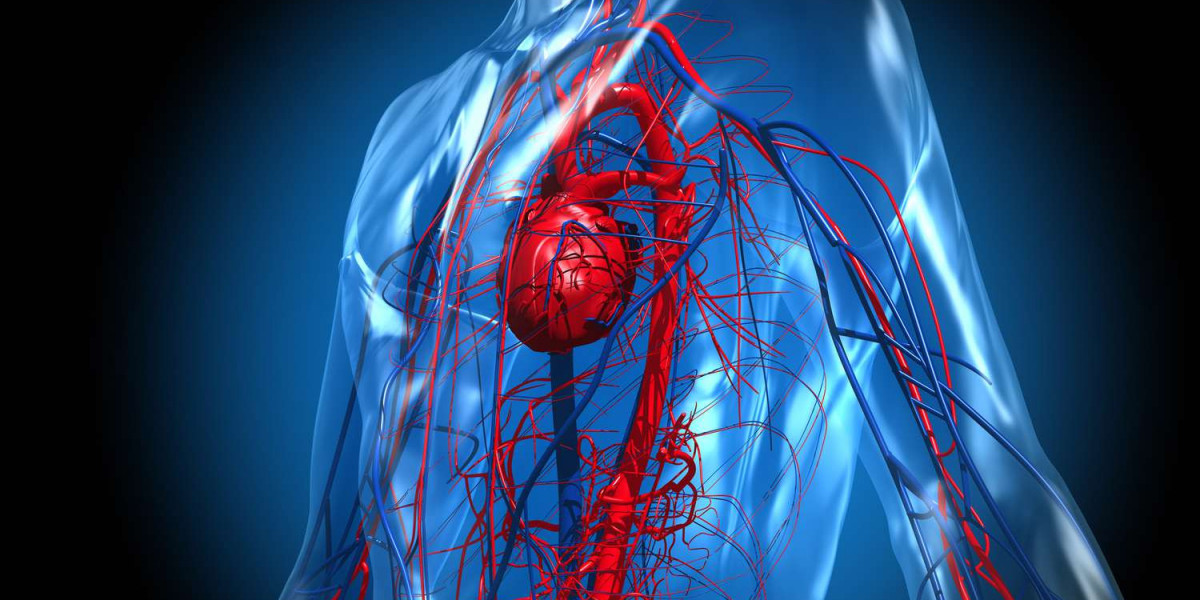The cardiovascular diagnostics market is experiencing significant growth due to the rising prevalence of cardiovascular diseases (CVDs) globally, advancements in diagnostic technologies, and the increasing focus on early detection and personalized treatment approaches. Cardiovascular diseases, including heart disease, stroke, and hypertension, remain the leading cause of death worldwide, creating an ongoing demand for accurate diagnostic tools and techniques to manage these conditions effectively.
Key Drivers of Market Growth
Rising Prevalence of Cardiovascular Diseases: The global rise in CVDs is a major driver for the cardiovascular diagnostics market. Factors such as an aging population, sedentary lifestyles, unhealthy eating habits, smoking, and stress contribute significantly to the increasing number of individuals at risk for heart-related issues. According to the World Health Organization (WHO), CVDs are responsible for approximately 31% of global deaths, underscoring the need for continuous innovations in diagnostic technologies.
Technological Advancements: Recent advancements in diagnostic tools, such as non-invasive imaging technologies, molecular diagnostics, and artificial intelligence (AI)-driven diagnostics, are enhancing the accuracy, speed, and cost-effectiveness of cardiovascular diagnoses. Technologies like echocardiography, magnetic resonance imaging (MRI), computed tomography (CT), and positron emission tomography (PET) are providing more precise insights into the functioning of the heart and blood vessels.
Growing Demand for Early Diagnosis and Personalized Medicine: There is an increasing demand for early detection of cardiovascular diseases, which can significantly improve treatment outcomes. Personalized medicine, which tailors treatment plans to the specific needs of patients based on their genetic makeup and disease progression, is gaining traction. This trend is prompting the development of diagnostic tools that not only identify the disease but also help in determining the most effective treatment strategies.
Increasing Awareness and Preventive Healthcare Initiatives: Governments and non-governmental organizations are increasingly focused on promoting preventive healthcare measures, including cardiovascular screenings. Public awareness campaigns and health check-up programs are encouraging individuals to undergo regular heart screenings, further boosting the demand for diagnostic solutions.
Market Segmentation
The cardiovascular diagnostics market is segmented based on product type, technology, end-user, and geography.
Product Type: The cardiovascular diagnostics market includes various product categories such as imaging systems, blood pressure monitors, electrocardiogram (ECG) devices, cholesterol testing kits, and biomarkers. Imaging systems, which include devices like echocardiography, CT, MRI, and PET scanners, hold the largest market share due to their ability to provide detailed images of the heart and blood vessels. ECG devices, used to monitor the electrical activity of the heart, are also widely used in diagnostics and routine check-ups.
Technology: The market is segmented by technology into invasive and non-invasive diagnostic tools. Non-invasive technologies, such as ultrasound, echocardiography, and blood pressure monitors, are becoming more popular due to their convenience, safety, and ability to provide accurate results without the need for surgical procedures. Invasive diagnostic procedures, such as angiography, are still important for patients who require more detailed analysis or who are at high risk.
End-User: The primary end-users of cardiovascular diagnostics are hospitals, diagnostic laboratories, and home care settings. Hospitals are the largest consumers of cardiovascular diagnostic tools, as they require advanced imaging and monitoring systems to diagnose and treat patients. Diagnostic laboratories, which play a vital role in providing blood tests and biomarker analysis, are also critical in the diagnostic process. In recent years, home care settings have emerged as a significant end-user segment, with the increasing popularity of wearable health devices and remote monitoring solutions.
Regional Insights
The cardiovascular diagnostics market is witnessing varied growth across different regions. North America holds the largest share of the market, primarily due to the advanced healthcare infrastructure, high healthcare spending, and widespread adoption of innovative diagnostic technologies. The U.S. is a major contributor to the market in this region, with a large number of hospitals and diagnostic centers that utilize cutting-edge diagnostic equipment.
In Europe, the demand for cardiovascular diagnostics is growing, driven by an aging population, a high burden of CVDs, and an increasing focus on preventive healthcare. The Asia Pacific region is expected to witness the highest growth rate during the forecast period. This can be attributed to the rising incidence of cardiovascular diseases, growing healthcare investments, and an increasing number of healthcare initiatives aimed at improving public health.
Challenges and Barriers
Despite the positive market outlook, there are several challenges that may hinder the growth of the cardiovascular diagnostics market. The high cost of advanced diagnostic technologies is one of the major barriers, particularly in developing regions where healthcare budgets are limited. Moreover, the complexity of some diagnostic procedures and the need for skilled professionals to operate sophisticated equipment could limit market growth in certain areas.
There is also a concern regarding data privacy and the security of health information in the era of digital health technologies. With the growing adoption of telemedicine and remote monitoring devices, ensuring the security of patient data remains a critical issue that needs to be addressed.
Future Outlook
The cardiovascular diagnostics market is expected to continue its growth trajectory, driven by advancements in technology, the growing burden of cardiovascular diseases, and increasing awareness of the importance of early diagnosis. Innovations in AI, machine learning, and wearable diagnostic devices are likely to revolutionize the landscape of cardiovascular diagnostics, enabling more accurate, personalized, and timely interventions for patients. As healthcare systems worldwide strive to reduce the burden of cardiovascular diseases, the cardiovascular diagnostics market will remain a key component in improving patient outcomes and overall public health.
read more:
| https://www.pristinemarketinsights.com/cardiovascular-diagnostics-market-report |









